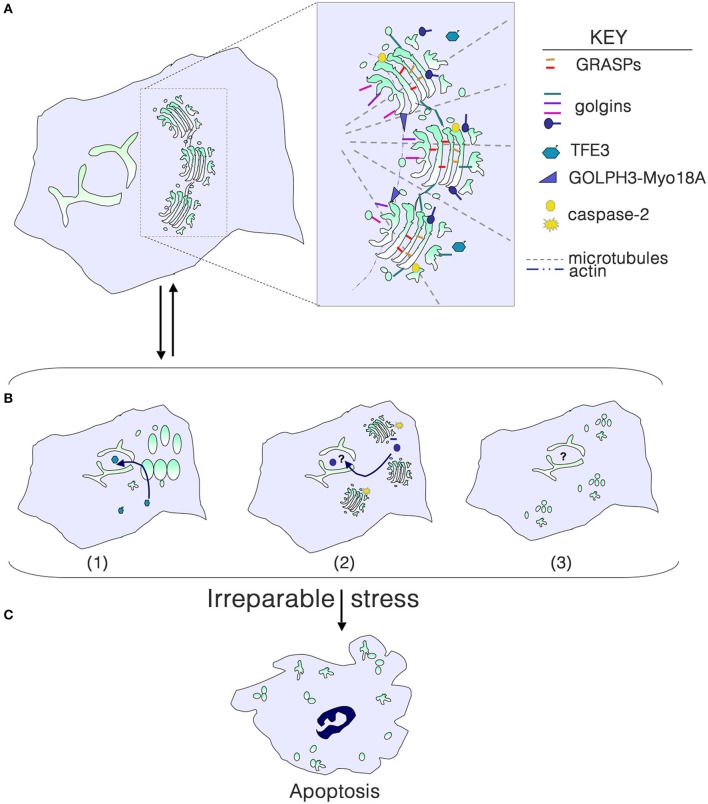Figure 1.
Golgi structure in life, stress and death. (A) Golgi morphology in a typical mammalian cell, with the key structural players shown in the inset. For simplicity, individual golgins and GRASPs are not indicated. (B) Golgi stress due to cargo load or size, ionic imbalance, infection with intracellular pathogens, or perturbation of glycosylation or the cytoskeleton results in structural alterations that can signal to the nucleus to help repair the stress. (1) Dephosphorylation of TFE3 and tranlocation to the nucleus results in transcription of genes with a GASE, including some glycosyltransferases and trafficking components. (2) Activation of local caspase-2 cleaves select golgins, and fragments enter the nucleus to perform an unknown function. (3) Phosphorylation of GRASPs and golgins or their cleavage can result in a more complete disassembly of the Golgi, although the consequences for signaling to the nucleus are unknown. (C) With irreparable stress, the Golgi is completely disassembled as the cell undergoes apoptosis.

